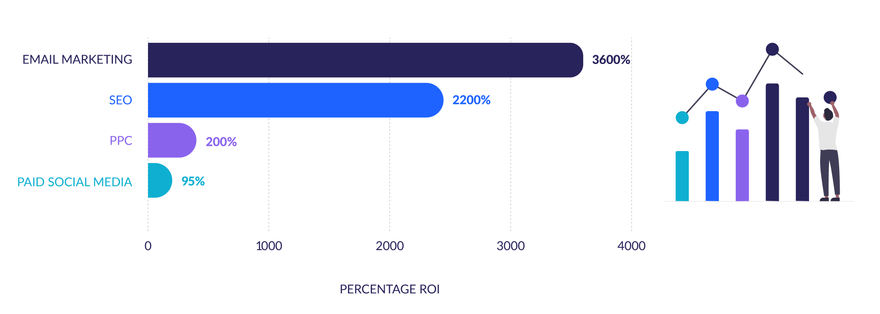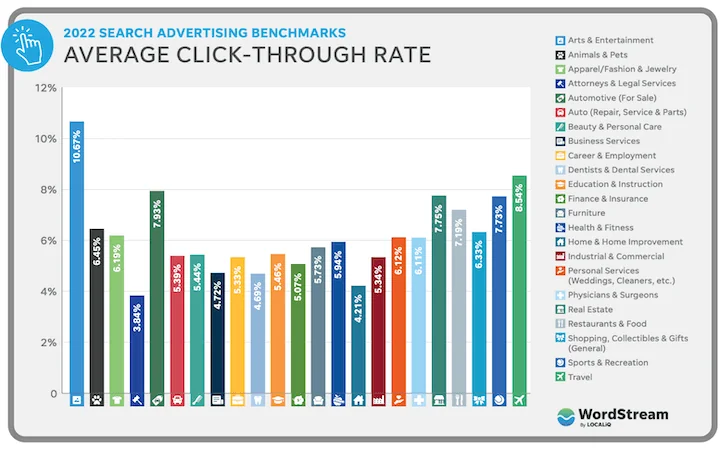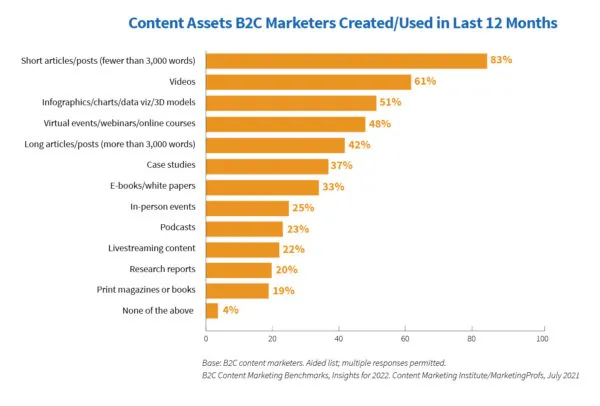How To Improve Digital Marketing Strategy for Better ROI?
As a digital marketer, securing a good return on investment (ROI) for your marketing campaigns is essential. It’s the best way to tell whether your marketing efforts have been successful and exactly what’s working and what isn’t.
We will look at the ins and outs of digital marketing ROI and examine what you can do to achieve the best possible results for this metric.
What is Digital Marketing ROI?
Digital Marketing ROI measures the return on investment of your digital marketing campaigns, allowing you to see how much profit you’ve made for every dollar you’ve spent. It’s one of the best ways to determine the success of your digital marketing efforts.
A positive ROI means you’re profitable, making more from your marketing than you’ve spent. A negative ROI, on the other hand, means you’re spending more on your marketing than it’s generating in income, so there’s room for improvement.
Why You Should Measure the ROI of Digital Marketing
Measuring the return on investment (ROI) of your digital marketing is important for several reasons.
Broadly speaking, the ROI of your digital marketing will tell you whether your campaign has been successful or not. Understanding the return on investment of your marketing campaigns helps you to see exactly which approaches are working and which aren’t.
Marketing tactics producing a good ROI are worth pursuing again in the future, whereas anything that results in a negative ROI should probably be avoided.

Knowing this information helps you to plan future campaigns more effectively, allowing you to make well-informed decisions about which types of digital marketing you should focus on.
How to Measure Digital Marketing ROI
At its heart, ROI measures how much money a marketing campaign has generated. To calculate this, you can use the following formula:
ROI = (Net Profit / Initial Cost) * 100
For this equation, net profit is calculated by subtracting the initial investment cost from the revenue it has generated.
We multiply the result by 100 to express the ROI as a percentage. The higher the percentage, the more successful the marketing campaign has been. Anything below 100% indicates that the marketing campaign has made a loss.
While the ROI calculation is useful, it’s not the only indicator of a marketing campaign’s success. Depending on your company’s unique goals, tracking other metrics may also be helpful.
Return on Ad Spend (ROAS)
Return on ad spend (ROAS) is very closely related to ROI, only instead of calculating the return from an entire campaign, it measures the return of a single component.
It’s useful when you may be testing a new type of advert or content and don’t wish to wait to determine the success of an entire campaign before deciding whether or not to pursue it.
To calculate it, use this formula:
ROAS = (Revenue / Cost of Ad) * 100
Click Through Rate (CTR)
The click-through rate is useful if your digital marketing campaign is designed to build brand awareness and drive lead generation.
It will tell you how many of the people that have seen your marketing have clicked one of its links and arrived at your landing pages, giving you an idea of how enticing your digital marketing is.
You can calculate it with the following formula:
CTR = Number of Clicks / Number of Impressions

How to Improve Your Digital Marketing ROI
Now that you understand the ins and outs of digital marketing ROI, it’s time to look at how it can be improved.
Set Goals
Setting relevant, achievable, measurable goals is a good first step for many business strategies, including improving your digital marketing ROI.
For example, say you’re marketing enterprise business fax solutions. Your main goal may be to attract more B2B clients.
Having clear goals helps to steer your digital marketing efforts and ensures that everybody on the team is working towards the same target.
Track Relevant KPIs
The KPIs (key performance indicators) you track should be relevant to your goals. This will provide you with useful, actionable insights that will help you boost your digital marketing ROI.
For example, if your current digital marketing campaign aims to boost conversions, then you should ensure you’re measuring relevant metrics such as conversion rate.
This will allow you to determine how successful your campaign has been at boosting conversions and, therefore, whether it’s providing a good return on investment.
Identify Areas of Improvement
As you track your metrics, you’ll be able to identify any areas in which your digital marketing strategy may be underperforming.
For example, if you’re struggling to attract new B2B customers, it could be that your marketing isn’t highlighting the positive impacts your product can present to businesses.
In the case of our fax solution example, it may be worth creating content that expands upon these unique benefits, such as how a HIPAA fax service can provide increased security.
It’s important to act quickly when these areas of improvement become apparent, to ensure that you’re not continuing to pump money into a campaign that’s returning a poor ROI.
Areas of improvement can present themselves in a variety of ways. For example, you may find that a digital marketing campaign is underperforming with a particular demographic, such as younger consumers.
If this is an age group you were hoping to target, you might try increasing the number of ads that will be visible to this demographic. You could increase your ad spend on social networks and websites with a large percentage of younger viewers, such as TikTok.
Create High-Value Content
Sometimes, a poor ROI on your digital marketing may be due to the type of content that you’ve produced. It can be difficult to anticipate exactly how an audience will respond to your marketing campaigns, especially during your early outings.

If a campaign generates lower click-through and lead generation rates than you would like, you may wish to revisit the content you’ve produced and see where it could be improved.
One way to do this is to rethink your brand voice. Consumers react well to relatable content, so you should think about your target demographics and research how they’re communicating so you can speak to them in a way that’ll resonate with them.
You may even wish to host content on alternative domain names more relevant to your target audience.
You should also identify what kinds of content your target demographics desire most and which they’re most likely to interact with.
To do this, you could analyze comments and messages left by your consumers for frequently asked questions and then produce articles or video content which answers these questions.
If your customers are struggling with how to email to fax, you could create a tutorial video that explains the process to them step-by-step.
Test Different Methods
Your efforts to improve your digital marketing shouldn’t simply stop once you’ve done your calculations and figured out your ROI. Even if your ROI is much higher than you hoped for, there’s always room for improvement!
Testing different approaches will give you a good idea of which methods provide the highest ROI.
You can perform A/B testing, crowdtesting, or other testing methods, to check out alternative approaches before implementing them. This will allow you to replace any underperforming ads or content with ones that will provide a better ROI.
Utilize Different Channels
It can be tempting to try and spread your marketing across every channel available to you, but this isn’t always the best way to ensure a good ROI. In fact, it’s often better to focus your efforts on one or two channels, especially if you’re just starting.
Which channels you choose are vital to your success. Otherwise, you could end up focusing your efforts in the wrong place and miss out on many valuable leads as a result. Use tools such as buyer personas to determine which channels are most likely to speak to your target customers.

It’s often also worth looking at your direct competitors’ channels. It could be that others in your industry are making impressive gains on a website or social network you may never have considered using, which could open up whole new avenues of business for you. Using tactics like embedded social media, such as when you embed Facebook feed on website, can significantly improve customer engagement by providing real-time updates and fostering a more interactive experience for your audience.
You may be able to create a mutually beneficial agreement with your competitors to share this information, using cloud data sharing to improve the digital marketing strategies of both parties.
If you’re wondering how to find clients for digital marketing agency work, consider leveraging targeted advertising campaigns and networking with industry professionals.
Try Marketing Automation Tools
Utilizing marketing automation tools is a fantastic way to drive down your marketing costs, which will help to improve your campaigns’ ROI just as much as increase your revenue.
The fewer manual tasks your marketing teams have to perform, the more time they have to craft content and analyze their results.
Email marketing automation can be used to personalize your email marketing without taking up too much of your marketing team’s time.
Whether you are generating leads for a gym or a SaaS startup, combining your email automation with a CRM can be a game changer for your marketing ROI. CRM integrations can be used to automatically populate emails with customer details, while triggers can be set up that will allow for emails to automatically be sent out when a customer performs a certain action, such as abandoning their cart during checkout.
You can consider using an e signature and document management solution such as Jotform Sign to automate the process.
Improve Your Digital Marketing Strategy and Maximize Your ROI
There are a variety of improvements you can make to your digital marketing strategy to maximize your ROI, from making use of automation tools to creating more relevant content.
Remember to set your goals early and regularly track your metrics to ensure you’re on the right path. If you’re not, test alternative approaches till you find a method that works.


